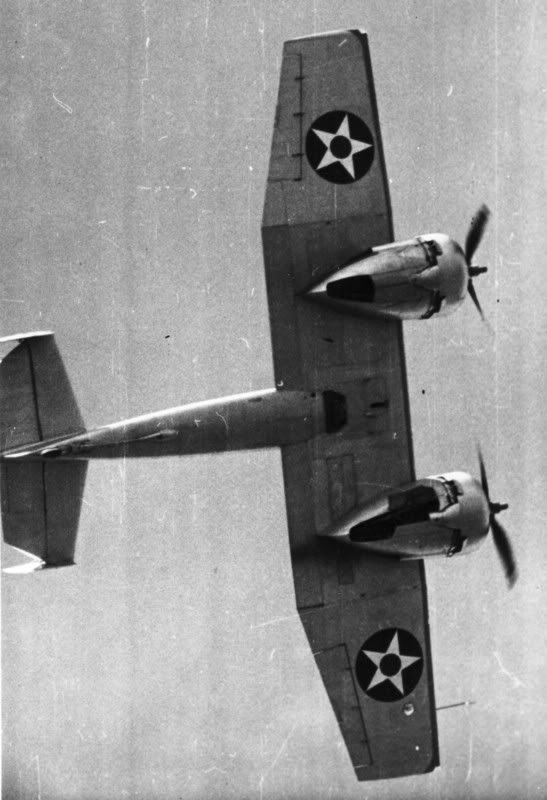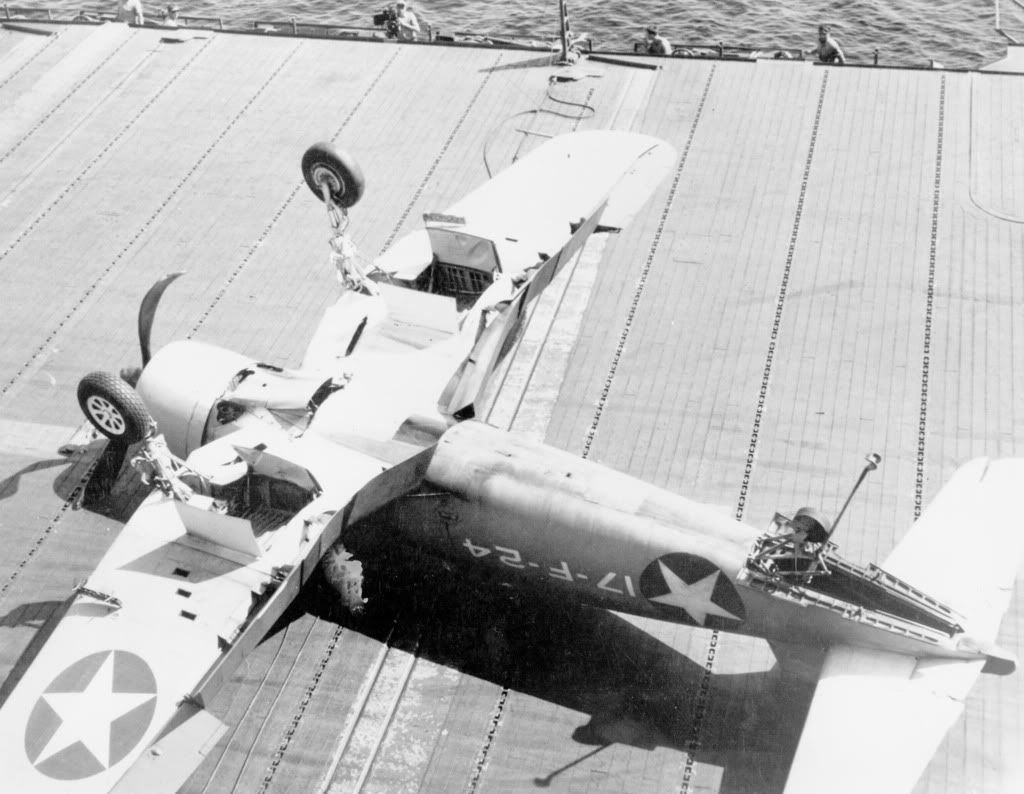Wildcat window
Sat Mar 29, 2008 11:53 am
Reading the thread on the B25 nose window brought up a question I have never had answered.
On some wildcats there is a small window on the lower part of the fuselage. What is the purpose of this?
Thanks in advance!
On some wildcats there is a small window on the lower part of the fuselage. What is the purpose of this?
Thanks in advance!
Sat Mar 29, 2008 12:02 pm
From http://www.vectorsite.net/avwcat.html :
* As the F4F-3 emerged, it was a stubby, barrel-like aircraft, with mid-mounted square-tipped wings and a sliding frame-style canopy. There was also a small window on each side of the floor of the cockpit to give a pilot better downward visibility, though in practice the belly windows proved nearly useless.
Sat Mar 29, 2008 12:08 pm
That was easy. Thank you. For some reason or another I was never able to figure that one out. I suspected that was the reason but you never know.
???
Sat Mar 29, 2008 12:56 pm
Also seen on the early F-4U1s and 1As.
Re: ???
Sat Mar 29, 2008 1:11 pm
Jack Cook wrote:Also seen on the early F-4U1s and 1As.
When Ed Shipley owned his late build FG-1D, it had the window. The window could be replaced with a piece of sheet metal quite easily.
From the Corsair use you could find your dive bombing target below you and then roll over to attack IIRC from the discussions I had with a couple of pilots.
Rich
Downward view window
Sat Mar 29, 2008 4:09 pm
The downward view window was seen on most if not all of the early U.S. monoplanes for different reasons. In the case of the TBD, the Norden bombsight was located there. The bombardier crawled under the pilot and lay on his belly to use it. in most, like the SBD and F4F, it was probably there to restore some of the downward visibility to the monoplane pilot, who was positioned more over the wing than the biplane pilot. However, in the case of the F4U, like its competitors the XFL-1 and the XF5F, it was also there so the pilot could aim little bombs housed in little bomb bays in the wings and drop them on bombers below. In this picture from the Grumman archives, its the dark area underneath the cockpit. The hole in the cockpit floor was located between the base of the stick and the instrument pane. The antiaircraft bomb capability was deleted from the XF4U but the window remained in early production.

Oh, and in case you didn't notice, one of the main gear door linkages broke on this test flight so the door didn't close.

Oh, and in case you didn't notice, one of the main gear door linkages broke on this test flight so the door didn't close.
???
Sat Mar 29, 2008 4:30 pm
The downward view window was seen on most if not all of the early U.S. monoplanes for different reasons. In the case of the TBD, the Norden bombsight was located there
If I'm not mistaken the TBD has doors which opened up not a window
???
Sat Mar 29, 2008 4:39 pm
Here are a windows on the -1 and -1A Corsairs.

F4U-1 17-F-24 of VF-17 USS Bunker Hill deck crash 1943

F4U-1A RNZAF crash at Fighter 2 Airstrip, Guadalcanal 1944

F4U-1 17-F-24 of VF-17 USS Bunker Hill deck crash 1943

F4U-1A RNZAF crash at Fighter 2 Airstrip, Guadalcanal 1944
Yes
Sat Mar 29, 2008 4:58 pm
Jack Cook wrote:The downward view window was seen on most if not all of the early U.S. monoplanes for different reasons. In the case of the TBD, the Norden bombsight was located there
If I'm not mistaken the TBD has doors which opened up not a window
Good point, it did have doors that had to be opened up. They kept the window clean of oil and exhaust products. Moreover, the door crank was at the prone position so it wasn't an option for the pilot. (I don't think it was located so the pilot could see through it anyway.) The TBF (and I guess the TBM) had a Norden bomb sight window too, but it was at the aft end of the bomb bay and the bomb bay doors had to be open to use it.
Re: Wildcat window
Sat Mar 29, 2008 8:21 pm
Cripes A Mighty wrote:On some wildcats there is a small window on the lower part of the fuselage. What is the purpose of this?
The dull and accurate answers above are all wrong.
a) So the pilot could see where the carrier wasn't on his return.
2) To make it harder for injection moulded kit manufacturers and later die-cast manufacturers to keep the rivet-counters off.
See, you know it makes sense.
Sat Mar 29, 2008 9:53 pm
Many years ago at an airshow, I asked Howard Pardue if his wildcat was an F4f. He replied "No, it's an FM-2P." I asked if the window was for the camera and he said no that it was for the pilot to visually check the position on the landing gear to confirm that it was down and locked. Remember the Wildcat had a hand crank to lower and raise the gear.